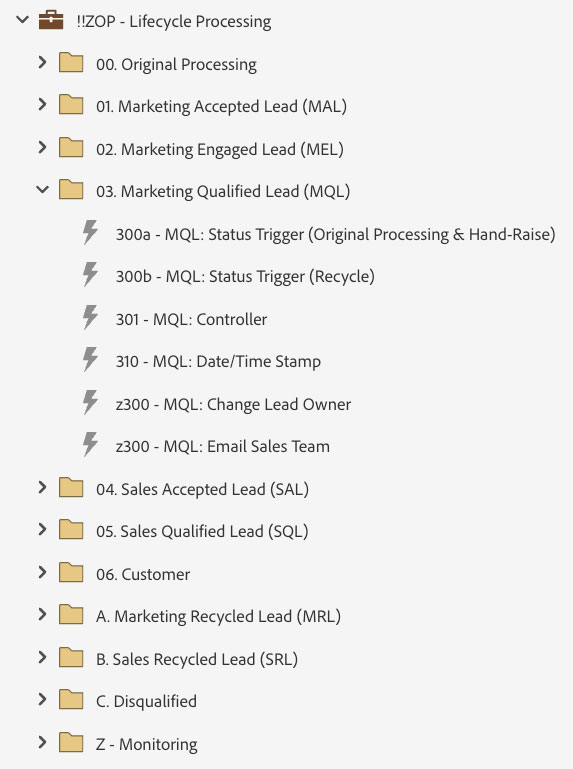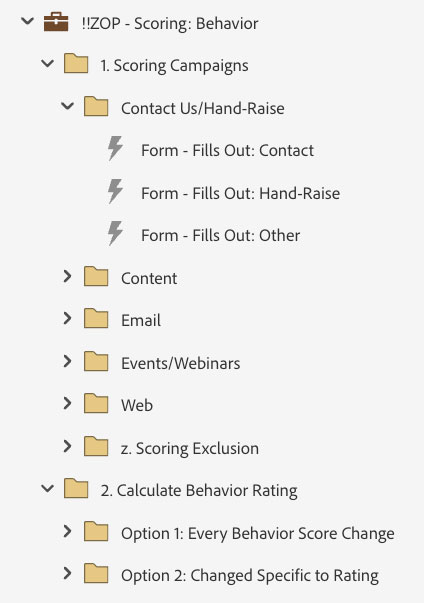Overview
Forecasting revenue is challenging for many companies. Lead velocity is one sales metric that can aid in this effort. To take advantage of lead velocity, you’ll need to have the appropriate lead management and lead nurture processes set up in your marketing automation platform.
An Important Sales Metric
Lead velocity is the growth, or percent increase, in the number of qualified leads coming into the sales pipeline month over month. It helps predict future revenue and is an important sales metric alongside others such as win rate and length of sales cycle.
Predicting Revenue Growth
Companies want to be able to forecast revenue. Unfortunately, the best guess of an opportunity’s probability to close isn’t always the best predictor. Taking a step back to the bigger picture, qualified lead volume, may be a more reliable indicator of long-term revenue.
Limiting marketing KPIs to net-new lead volume isn’t sufficient if those leads ultimately don’t move toward becoming paying customers. Assuming that conversion rate to customer is balanced out to a relatively stable average in the long run, increasing the volume of qualified leads (lead velocity) is likely to proportionally increase revenue after the average sales cycle duration has passed. This is a step toward true revenue-based marketing KPIs, which ultimately demonstrates marketing’s role as a revenue-generating team rather than a cost center.
Prepare for and React to Pipeline Needs
Naturally, businesses seek to increase revenue, and tracking lead velocity can help. Working on this metric is relevant for any company that wants to continue growing. The marketing team can make an effort to boost lead velocity when a dip in sales is anticipated, or when sales is not quite on track for quota.
Since lead velocity takes into consideration both overall lead volume and the qualification rate, lead velocity efforts can also bring to light areas of improvement such as insufficient lead generation, low lead quality and existing audiences that aren’t being actively engaged by the business to move them toward qualification.
Continuous Measurement and Nurturing
Establishing the baseline is the first step in being able to measure lead velocity. This requires that the appropriate architecture and data points be in place in the marketing automation platform to identify qualified lead volume, such as a Marketo Engage marketing funnel. This typically looks like a lifecycle operational program that identifies where a lead falls in their buyer’s journey, which should be aligned with the revenue model of the organization. For lead velocity purposes, the critical lifecycle stage will be “marketing qualified lead”, or MQL. MQLs are often identified by a score threshold, so an operational scoring program may be necessary. Other times MQLs are strictly based on demo requests and “hand-raisers”; either way, Marketo Engage programs for those request forms need to be in place.

Once the baseline volume is established, try to identify ways to increase that volume. What are the barriers to progressing from a net-new lead to one that is qualified – is it lack of information to make a decision? Internal work processes with gaps? If you have pre-MQL stages in your lifecycle, look for bottlenecks and stage transitions that take more time than expected. Are they engaging, but not meeting the MQL threshold? Or are they failing to engage at all? What opportunities to engage with the company have they been given, and do they meet the needs of the audience?
Bringing in more new leads may be the first step if overall lead volume is low and qualification rate is already high. There’s a limit as to how many people will ultimately qualify, and it isn’t realistic to expect that everyone will. Lead generation campaigns bring in the new leads that marketing aims to qualify. This can be accomplished with programs you can set up in Marketo Engage, such as gated content, events and demos, all of which will collect lead information via a form. If you have valuable content assets, be sure to offer them to the audience by making them available on your website and/or promoting elsewhere online. Be sure to leverage behavior scoring based on form fill or program status so you can identify when a lead is engaging to the point of qualification.

This content can also be used to continue engaging leads once they exist in your database, though it’s likely that they will need more than just the same entry-level content that appealed to them at first. Guide them toward qualification by nurturing them with Marketo Engage engagement program content. Provide them with the information that will pique their interest in exploring their needs and potential solutions. Use segmented audience targeting to provide the most relevant content for each person, and identify database records that aren’t currently being nurtured at all. If they have potential as a buyer, what do they need to move forward? Leverage existing content assets, and work with marketing to develop additional content to fill gaps.
A Marketing-Driven Effort
Marketing should collaborate with sales to define what makes a lead “qualified”, and there should be a continuous feedback loop. Falsely increasing qualified lead volume simply by sending over more lower-quality leads won’t be a sustainable way to achieve lead velocity.
Marketing can identify and address what it takes to qualify leads by generating valuable content with the intention of getting them eager to talk with sales.
Marketing operations can ensure that lead intake and lead processing are set up in Marketo Engage as well as establish a center of excellence to ensure content and engagement programs follow best practices.
Conclusion
Lead velocity is a key sales metric that can help the team predict future revenue. Measuring lead velocity depends on Marketo Engage operational framework, and success relies on comprehensive lead nurturing.







